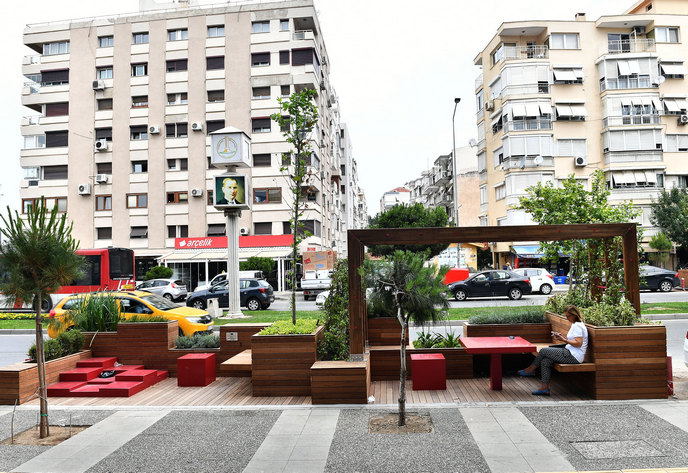Emerald cities: Green solutions to make nature thrive in the urban concrete jungle
The total area covered by cities around the world is set to dramatically increase over the next decades, wiping out cultivated land and bringing many negative consequences for residents and the environment. Poor air quality, floods, drought, heat waves, biodiversity loss and the urban heat island effect are just some prominent consequences of urban sprawl. A promising approach is to implement nature-based solutions (NBS) – interventions inspired by nature and designed to deal with societal and environmental problems. The EU-funded URBAN GreenUP(opens in new window) project aims to tackle these challenges. Under the coordination of the CARTIF Technology Centre(opens in new window), 25 partners from 9 countries are working together to develop a new strategy for integrating more nature into city planning. “Renaturing urban planning is the new keyword, offering a green transformation in cities through the implementation of NBS,” notes project coordinator Raúl Sánchez.
Green solutions tailored to cities’ needs
URBAN GreenUP has developed a digital tool that can assist authorities, urban planners and citizens in identifying the NBS that best fit a city’s needs. The tool is freely available on the URBAN GreenUP website(opens in new window). The tool recommends NBS for cities based on the challenges and capabilities of the city itself. It first asks users to nominate the city challenges in up to three urban areas (suburbs, neighbourhoods, watersheds) and then asks a series of questions that help determine the city’s greening capabilities. As a result, it provides a list of possible NBS interventions that correspond to the city’s nominated urban problems, as well as the city’s ‘success factors’ for urban greening, to make sure that feasible solutions are suggested. The tool is in its final stages of development. “The tool is designed to give suggestions that should help authorities and citizens choose the right NBS, based on both the city’s capabilities and the desired outcomes. It can also help them figure out how to build the capacity to deliver NBS and communicate to leaders what it’ll take to realise NBS in the city," explains Sánchez.
Released catalogues
The NBS Selection Tool is based on the solutions collected in the URBAN GreenUP NBS Catalogue(opens in new window). It aims to foster global uptake of the URBAN GreenUP approach by providing cities worldwide with robust indicators on how to embrace urban challenges using nature. So far, the project has released two relevant catalogues: the NBS Catalogue(opens in new window), presenting the disparate technical interventions being implemented by frontrunner cities, and the Climate Change Challenges Catalogue(opens in new window) that helps cities examine challenges and their impacts.
Project demonstrations
Project activities are carried out in the three frontrunner cities of Valladolid (Spain), Liverpool (United Kingdom) and Izmir (Turkey). The five follower cities - Mantova (Italy), Ludwigsburg (Germany), Medellin (Colombia), Chengdu (China) and Binh Dinh-Quy Nhon (Vietnam) - will directly learn from these experiences and set up their own renaturing urban plans. URBAN GreenUP’s NBS are grouped into four classes: renaturing urbanisation, singular green infrastructures, water interventions, and non-technical interventions. The project plans to implement more than 100 NBS in the three frontrunner cities. Examples include green bicycle and pedestrian routes, floating gardens, floodable parks, sustainable drainage systems, green roofs and façades, pollinator roofs, green shady structures and urban catchment forestry. In 2018, URBAN GreenUP promoted development of the Nature-Based Solutions Cooperation Manifesto that aims at renaturing cities through the cooperation and support of the European Commission Nature-Based Solutions Projects(opens in new window). The project is scheduled to run until 2022.







